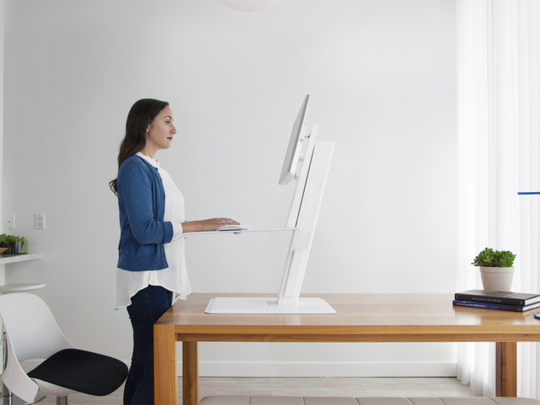
Most of us have suffered from a nagging back-pain, sore elbow, aching wrist or throbbing headache at work. But until a decade ago, most people were unaware of the deep correlation between these health issues and the work environment. Growing research over the years has shown that work-related health issues are common across most workplaces and have a deep impact on employee productivity and the overall wellbeing of the human asset in an organisation. Human engineering, or ergonomics, as it is popularly referred to, is the science that studies people’s efficiency in their working environment. With a whopping 70 per cent leave from work now being accorded to back pain in developed global markets, it is little wonder that ergonomics has taken centre stage in corporate policy and spend.
We spoke with Alan McDonald, managing director, Middle East and North Africa, Humanscale, about the importance and benefits of ergonomics in today’s workspaces, whether in office or at home.
Why is ergonomic furniture so important?
Ergonomics is the science of fitting the task to the worker to maximise productivity, while reducing discomfort, fatigue and injury.
Actually, there is very little that is ergonomic about traditional office furniture. It has been keeping people still for over 50 years. Desks that don’t move, computers and monitors on the desks that don’t move, and chairs that people don’t know how to unlock; which means that the humans in these work setups don’t move either.
The data is very clear that sitting perfectly still is one of the unhealthiest things you can do, maybe even worse than smoking. Movement is the key to staying healthy at work. Static furniture makes the user change posture to suit it. At Humanscale, we make ergonomic tools that adjust to the user, not the other way around.
Which pain points does your range of furniture address?
The correct use of our ergonomic products helps reduce a variety of musculoskeletal disorders, carpal tunnel syndrome and repetitive strain injuries.
What are the top benefits of ergonomic furniture and accessories?
On average we sit at our desks longer than we sleep in our beds. None of us would buy a bad mattress, so why do we buy poor-quality task chairs? The investment to make you more comfortable at work means you are not only more effective and productive, but also looking after your health.
Give us some examples of ergonomic furniture.
• Workstation seating
Task chairs are those that automatically adjust using your weight. This means you can move from posture to posture and still be fully supported. Around 98 per cent of users do not know how to adjust their expensive adjustable task chair, so we designed a chair that does the adjustments for you.
• Monitor arms
Monitor arms allow you to bring your work forward so you can sit in a neutral posture. This prevents a user being hunched over the desk, causing strains and stresses. A monitor arm helps increase the space at the desk by reducing stand supports such as boxes or A4 paper stacks. They are also great tools to aid collaboration. Around 60 per cent of collaboration happens at the desk rather than a meeting space. The ability to move a screen around and share work is a big help.
• Sit/stand tools
Our sit/stand tools are designed to enable instant and intuitive switch from a seated to a standing position. Research indicates that one should be standing for 15 minutes of every hour. After an hour of sitting, your metabolism will reduce by up to 90 per cent. Standing stimulates blood flow, keeping you feeling fresh, reducing the need for caffeine and getting you past the post-lunchtime lull.
• Lighting
The standards for most ambient lighting in offices were written in the 80s and 90s, when paperwork and green screens were prevalent. This means that in general office lighting is too bright. With the advanced technology in flat screens today, we can work on our computers in almost near darkness. However, we have not yet become the paperless office everyone envisaged. This is why we need a task light to personalise the lighting we need. Also, task lights help reduce energy costs by up to 40 per cent.
Are your products also designed for home?
All of our products can and are used in a home office. Some of our task lights are also well suited to residential and hospitality settings. Work is no longer tied to any one space and is constantly evolving — intuitive design means that a single product can solve a variety of functions and meet multiple requirements.












